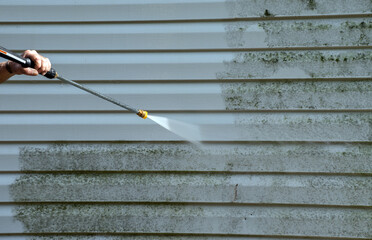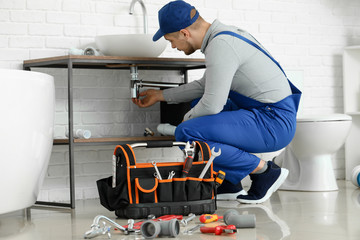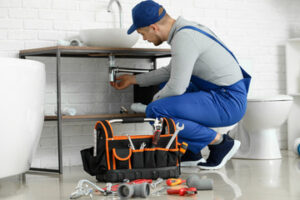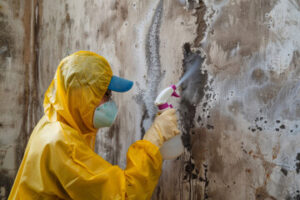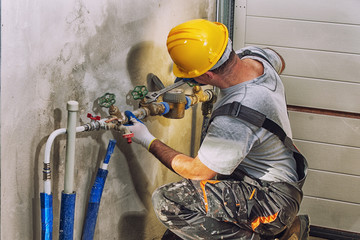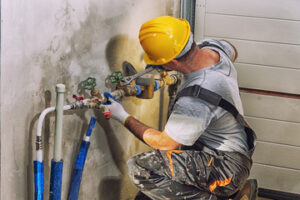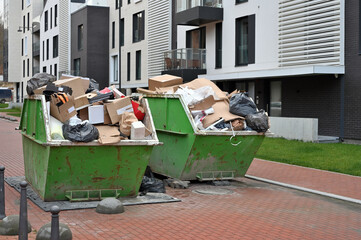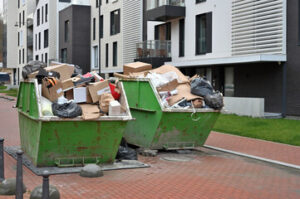Pressure washing is a fast, effective way to remove grime, mildew and mold from many outdoor surfaces. It can also extend the life of your home’s paint job.
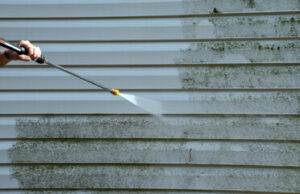
Use a gas or electric pressure washer with a PSI of up to 1,500 and a gpm of up to 1.6. Anything higher is considered pro-grade power and can strip surface paint. Visit https://wwoftx.com/ to learn more.
Vinegar is a natural cleaning solution that can be used to clean windows without leaving streaks. It is a safe and cheap alternative to commercial window cleaners, and it is non-toxic to the environment. It is also a good choice for outdoor use because it does not produce harmful fumes. It is important to choose white distilled vinegar for this application, as other types can be damaging to glass surfaces.
In addition to its ability to remove dirt and grime, vinegar can also kill mold and mildew spores. This can prevent them from growing and spreading, which can cause damage to your property. If your property has been damaged by mold or mildew, it is a good idea to clean it with a pressure washer before the problem worsens.
The high-pressure water spray from a pressure washer can remove dirt and grime from hard-to-reach areas that are otherwise difficult to reach with conventional cleaning methods. This includes cracks and crevices on your home’s exterior, driveways, patios, decks, and pool areas. It can also remove oil stains and other contaminants from concrete surfaces, and it can even help restore wood decks and siding to their original appearance.
Unlike traditional cleaning methods, which require chemicals to achieve the same results, pressure washing is a quicker and more effective way to clean your property. In addition, it can be used to clean a variety of different surfaces, including wood and metal. You can use a variety of different nozzles to adjust the level of pressure and the area you wish to clean.
Many professional pressure washing services offer environmentally friendly detergent soaps. These soaps are made from natural products such as fats and oils from plants and animals, which are combined with salts to form bar or liquid soap. When used with a pressure washer, these soaps can help remove stubborn stains and dirt from various surfaces. They can also be used to pretreat certain surfaces before applying a more aggressive cleaning method such as power washing. They can also be used to remove moss, algae, and mildew from exterior surfaces such as walls, sidewalks, roofs, and patios.
Dishwasher Soap
Choosing the best dishwashing detergent is crucial for sparkling dishes and a long-lasting dishwasher. While there are many different formulas to choose from, the right choice will depend on the type of dishes you are washing, your water hardness, and even personal preferences such as scents.
Liquid detergents are usually favored for their ease of use. They can be dispensed directly from the bottle and are easy to control, so you can adjust your dose based on the size of the load. They are effective in removing light to medium stains and tend to be gentle on delicate glassware. However, they can struggle against hard water and are prone to overuse, leading to residue and filming.
Powdered detergents are ideal for heavy-duty stains and have high cleaning power. They are also economical, offering more washes per box compared to pods or liquids. Despite their strong cleaning capabilities, they are not recommended for automatic dishwashers as they can leave behind soap scum and clog the machine’s plumbing. They are also prone to clumping, so you should always mix with hot water before dispensing.
Dishwashing soaps with a high concentration of surfactants typically offer the strongest cleaning results, but can be harsh on hands. They can also cause unpleasant odors, especially when scented. To avoid this, you should look for natural or eco-friendly products that have fewer surfactants and are free from fragrances, dyes, and synthetic additives.
Hand and sink soaps are formulated to create lots of suds, but they can easily overflow from your dishwasher and onto the floor. This can result in a poor rinse and could even damage the appliance’s internal components.
If you are looking for a gentler option, try a plant-based or biodegradable dish soap. These products typically have a lower pH and use less surfactants than conventional dishwashing soaps. They may cost a bit more, but they are better for the environment and your hands. You can find these products in most supermarkets and online. You can also find a range of other natural and eco-friendly cleaning products at specialty stores.
Lemon Juice
Lemon juice is the tangy liquid that comes from the fruit of the lemon tree (Citrus limon). It’s an essential ingredient in a variety of dishes, adding a burst of flavor and citrusy zest to salad dressings, desserts, and beverages. The acidic nature of lemon juice also makes it a popular household cleaner.
Because it’s a natural acidic cleanser, it can be used on surfaces that might be damaged by harsh chemical cleaners. It’s particularly good at removing limescale deposits from kettles and tea and coffee stains from cups. Lemon juice can also brighten dull pots, pans and cutlery if you rub it on the surface and leave it to act for a short while.
It’s also a great way to get rid of rust spots on metal. Just apply it directly to the rusty area and let it sit for a few minutes before washing the affected item. This can be done on a regular basis to prevent the rust from returning.
If you’re not sure how to squeeze the most out of your lemon, try rolling it on the counter before cutting it. This will give it some structure and help you to extract more juice without any messy leaking. You can also use a citrus juicer instead of just using your hands. It’s important to remember that lemon juice is a powerful acid and can damage some surfaces such as marble.
Lemons are a superfood, packed with vitamin C, potassium and calcium. They also have plenty of antioxidants to keep the body healthy and protect it from free radicals. They can boost the immune system, fight off colds, aid digestion and reduce symptoms of bloating and indigestion. They can also encourage hydration by helping to increase the amount of water you drink on a daily basis.
If you don’t have any fresh lemons on hand, you can also buy a bottle of lemon juice concentrate from a store or online. Just make sure to read the label carefully and check for any additives or preservatives. It’s also worth mentioning that lemon juice can damage some types of fabric and should not be used to clean leather items.
Squeegee
Using a squeegee to clean windows is a game-changer, especially for those who struggle to achieve streak-free results when using paper towels or microfiber cloths. Squeegees are flat rubber tools that are used to wipe smooth surfaces, removing water and cleaning solution efficiently. They can also be used to remove paint from surfaces such as walls or doors, making them a versatile addition to any cleaning toolkit.
Squeegees are available in a variety of shapes and sizes, with blades made from different materials to suit specific tasks. They can be found in a range of thicknesses, and the hardness of the rubber is important as it can impact how easily the blade glides across the surface. For example, a harder blade will leave a thinner ink film than a softer one. Squeegees can be used to remove excess fluid from a variety of materials, including water, paint and ink. They are commonly used in the printing industry, as well as in window cleaning and car washing.
A squeegee is a simple, cost-effective and easy-to-use cleaning tool that can help you to achieve a streak-free finish on your windows. However, it is important to use the squeegee correctly in order to get the best results.
Start by spraying your cleaning solution onto the windows, then use the scrub side of the squeegee to loosen any grime that has built up. Once you have removed as much dirt and residue as possible, switch to the rubber side of the squeegee and run it over the glass. Be sure to apply pressure with your squeegee to ensure that all moisture is removed from the window, otherwise you will end up with streaks.
To squeegee correctly, you should start at the top of your window and work your way down, wiping away any soap scum or residue as you go. Once you have finished, take a step back and check the window for any remaining residue or streaks. If necessary, repeat the process until you have achieved a flawless finish. For the best results, you should always use a squeegee with a fresh, clean blade. Keep extra blades on hand and replace them as soon as they become nicked or rounded with use.

